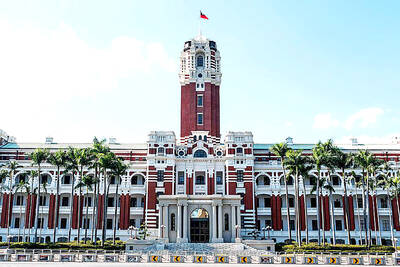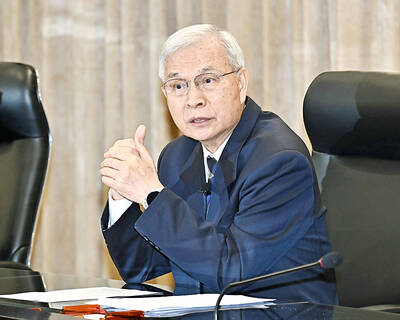Economic growth in the Asia-Pacific region, excluding China, will plunge to 1 percent to 2 percent this year because of a global slowdown and in the wake of the terrorist attacks on the US, the IMF said yesterday at a meeting in Hong Kong.
Speaking at the World Eco-nomic Forum's three-day East Asia Economic Summit, International Monetary Fund deputy managing director Shigemitsu Sugisaki added that the IMF had US$50 billion available to help countries cope with the slowdown.
"Our estimate is, that excluding China, growth in the region is forecast to fall from about 6.5 percent last year down to 1 percent to 2 percent this year, so something like a 5 percentage point decline. That's huge," he told delegates attending the forum.
However, the region would only see a slight recovery in economic growth to 2 percent to 3 percent in next year, he said.
The weakest growth would be seen in Singapore, Taiwan and Hong Kong while the slowdown in other less open nations, namely Philippines, Indonesia and Malaysia was expected to be less pronounced.
"China is the exception in that it will continue to grow around seven percent," he said.
Sugisaki said although there was limited scope for macro-economic policy action in Japan, it "must now resume its leadership role in Asia."
Japan could achieve this through decisive action to reform the banking and corporate sectors.
"Resolving the debt issues is really the only way in which to revive the long-term growth prospects," he said.
Although the recovery of East Asian economies was dependent on the global recovery, it did not mean regional countries did not need to take any action themselves, he said.
"[On the] macro-economic policy front, those with low inflation and a flexible exchange rate -- Singapore, Thailand and Korea -- have more scope to ease monetary policy than those with a fixed exchanged rate."
He called on governments around the region to refrain from the temptation of abandoning structural reform program in light of the economic slowdown.
"In an environment where markets have a low tolerance for weak markets, structural reforms will serve to build confidence and will help the countries in this region distinguish themselves from other emerging markets," he said.
He said the IMF had stepped up its surveillance activities on countries around the region and "we are also ready to give more financial assistance to countries that are trying implement good policies in the more difficult circumstances.
"I can report to you the IMF has comfortable resources to do so. The size of the resources available for further assistance is in the order of US$50 billion in the near term.
"Hopefully, these resources can be used to prevent crisis rather than to manage crisis," he said.

The CIA has a message for Chinese government officials worried about their place in Chinese President Xi Jinping’s (習近平) government: Come work with us. The agency released two Mandarin-language videos on social media on Thursday inviting disgruntled officials to contact the CIA. The recruitment videos posted on YouTube and X racked up more than 5 million views combined in their first day. The outreach comes as CIA Director John Ratcliffe has vowed to boost the agency’s use of intelligence from human sources and its focus on China, which has recently targeted US officials with its own espionage operations. The videos are “aimed at

STEADFAST FRIEND: The bills encourage increased Taiwan-US engagement and address China’s distortion of UN Resolution 2758 to isolate Taiwan internationally The Presidential Office yesterday thanked the US House of Representatives for unanimously passing two Taiwan-related bills highlighting its solid support for Taiwan’s democracy and global participation, and for deepening bilateral relations. One of the bills, the Taiwan Assurance Implementation Act, requires the US Department of State to periodically review its guidelines for engagement with Taiwan, and report to the US Congress on the guidelines and plans to lift self-imposed limitations on US-Taiwan engagement. The other bill is the Taiwan International Solidarity Act, which clarifies that UN Resolution 2758 does not address the issue of the representation of Taiwan or its people in

US Indo-Pacific Commander Admiral Samuel Paparo on Friday expressed concern over the rate at which China is diversifying its military exercises, the Financial Times (FT) reported on Saturday. “The rates of change on the depth and breadth of their exercises is the one non-linear effect that I’ve seen in the last year that wakes me up at night or keeps me up at night,” Paparo was quoted by FT as saying while attending the annual Sedona Forum at the McCain Institute in Arizona. Paparo also expressed concern over the speed with which China was expanding its military. While the US

SHIFT: Taiwan’s better-than-expected first-quarter GDP and signs of weakness in the US have driven global capital back to emerging markets, the central bank head said The central bank yesterday blamed market speculation for the steep rise in the local currency, and urged exporters and financial institutions to stay calm and stop panic sell-offs to avoid hurting their own profitability. The nation’s top monetary policymaker said that it would step in, if necessary, to maintain order and stability in the foreign exchange market. The remarks came as the NT dollar yesterday closed up NT$0.919 to NT$30.145 against the US dollar in Taipei trading, after rising as high as NT$29.59 in intraday trading. The local currency has surged 5.85 percent against the greenback over the past two sessions, central